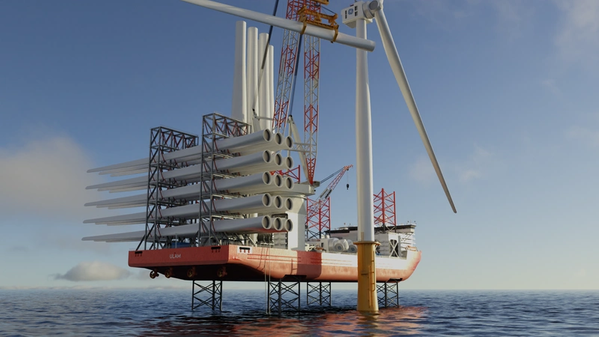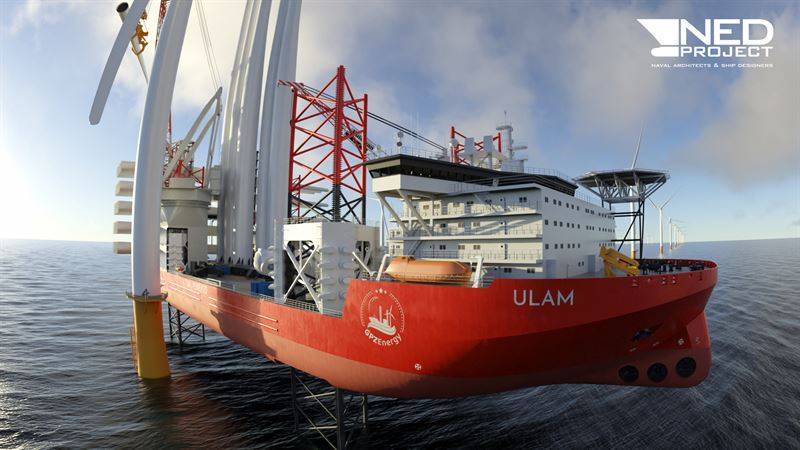
Classification society American Bureau of Shipping (ABS) has granted its Approval in Principle (AIP) to Ned Project Inc. for its hydrogen-ready wind turbine installation vessel (WTIV) design.
The NP20000X ULAM design is intended to be Jones Act Compliant and able to meet future offshore wind market demands, specifically operations involving 15-20 MW wind turbine installations.
According to ABS, the vessel's innovative approach loads monopiles vertically on the 8,000 square-meter (m2) deck, eliminating the need to rotate monopiles to the vertical position at sea, increasing efficiency, and safety.
The design is equipped with a leg encircling heavy cargo crane with a working load of 3,500 metric tons capable of handling turbines of 240-meter rotor diameter and 150-meter tower height.
Ned Project Inc. is working with GPZ Energy to develop ULAM WTIV projects for the U.S. market. Credit: Ned Project
Credit: Ned Project
"There is significant potential for growth in the U.S. offshore wind market and we are confident our WTIV design has the attributes required to deliver this. The scale, power and handling capacity as well as the innovative way it handles the monopiles means this is perfectly adapted to serve the U.S. industry," said Peter Novinsky, spokesperson for GPZ Energy.
According to ABS, the design is hydrogen-ready with the engine rooms able to be converted into fuel cell compartments accommodating polymer electrolyte membrane fuel cells, making it possible to rely solely on liquefied hydrogen (LH2) to meet its energy demands.
Worth noting, Dominion Energy's Charybdis, the first Jones Act compliant WTIV is now being built to ABS Class. Also, the first U.S flagged Jones Act offshore wind farm service operation vessel (SOV) ever ordered will be built to ABS Class. These vessels will join the first ABS-classed crew transfer vessel (CTV) in the U.S., Windserve Odyssey. ABS has also issued AIPs for a series of wind support vessels from European designers.